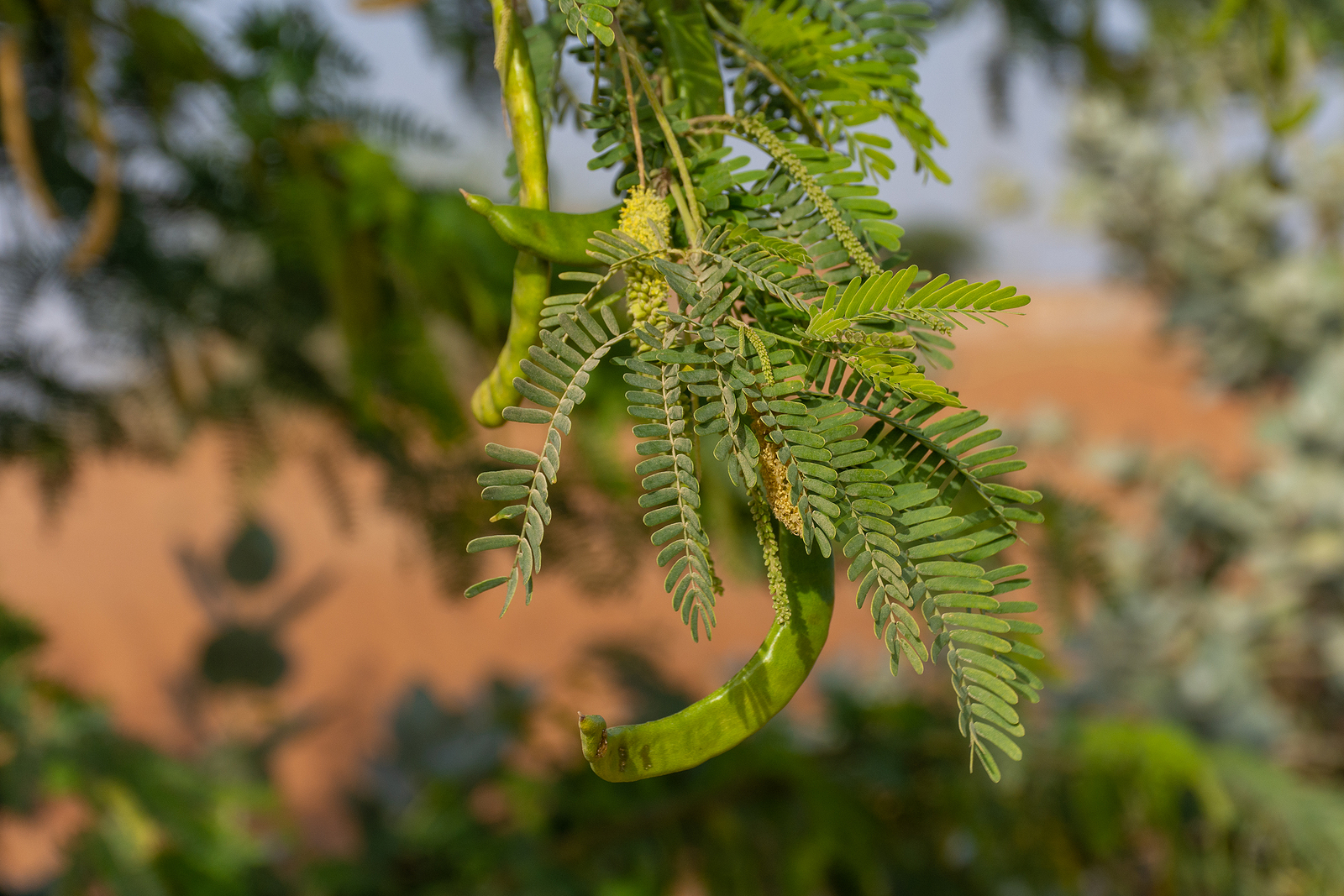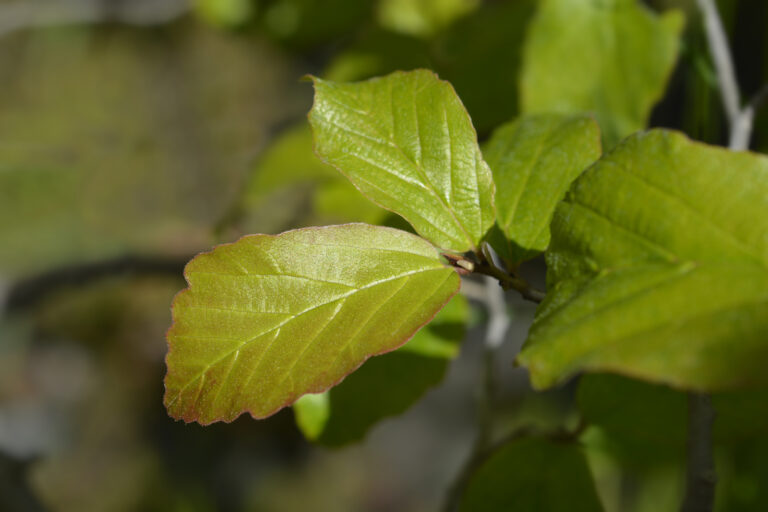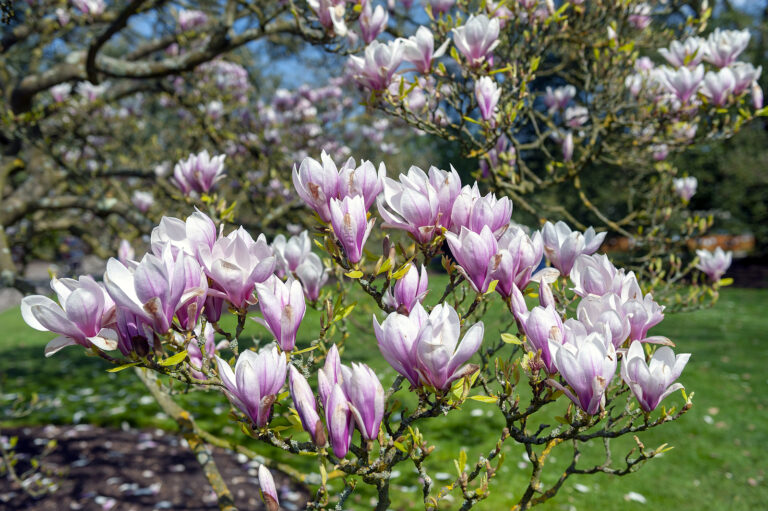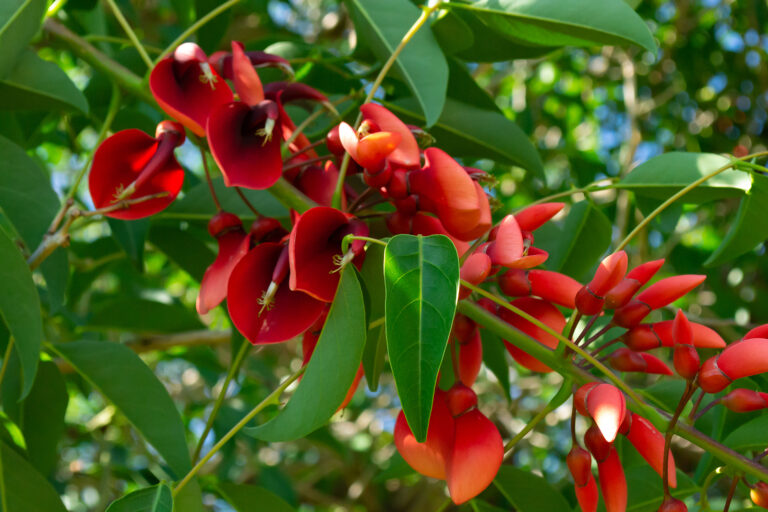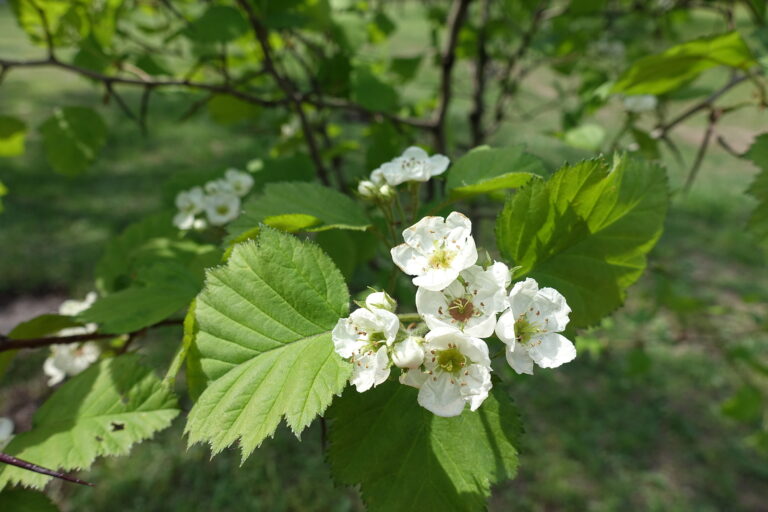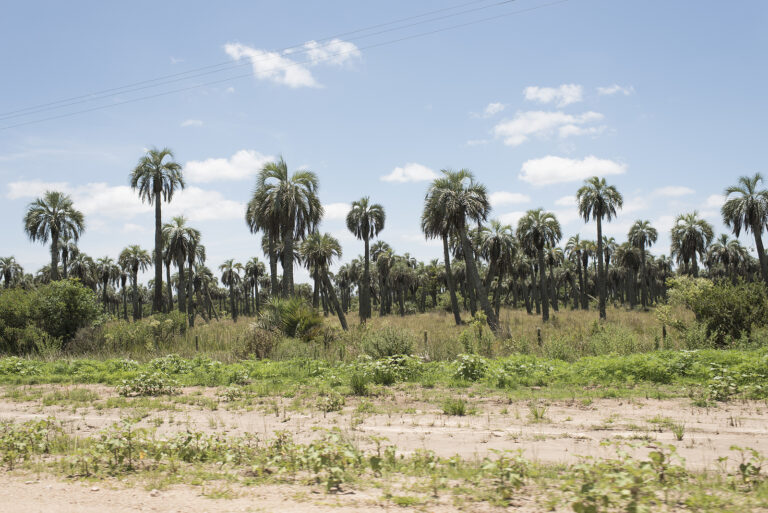How to Grow Prosopis – Mesquite
Prosopis–commonly called mesquite–is an evergreen or deciduous tree with a picturesque, spreading canopy. Prosopis grows rapidly to about 30 feet (10m) and 15 feet (5m) wide.
Prosopis has thorny branches with tiny leaflets. Small spikes of tiny greenish-yellow flowers appear in spring; bean-like pods follow flowers in summer.
Use Prosopis as a windbreak or screen or for erosion control to stabilize dunes. Established plants are highly drought tolerant but will take water easily. In poor, rocky soil without water, Prosopis will grow shrubby.
Mesquite is often grown for commercial purposes; the wood is used in grilling, the flowers to make honey, and the seed pods to feed cattle.
Prosopis is a genus of 44 species of trees, shrubs, and subshrubs native to deserts and semi-deserts in the Southwest United States and Mexico.
Get to Know Prosopis
- Plant type: Trees, shrubs, and subshrubs
- Growing zones and range: Zones 8 to 11
- Hardiness: Zone 8
- Height and width: To 28 feet (9m) tall and 15 feet (5m) wide
- Growth rate: Fast
- Form and habit: Rounded, airy form
- Foliage: Thorny branches, 2-pinnate fernlike leaves with many oblong leaflets
- Flowers: Axillary racemes of tiny, 2-4 inch (5-10cm), greenish yellow, pea-like flowers are delightfully fragrant
- Fruits: 2-8 inch (5-20cm), flat, beanlike pods
- Bloom time: Spring-summer
- Uses: Erosion, stabilizing dunes, windbreak, screen
- Garden companions:
- Common name: Mesquite
- Botanical name: Prosopis
- Family name: Fabaceae
- Origin: Southwest United States, Mexico, and South America
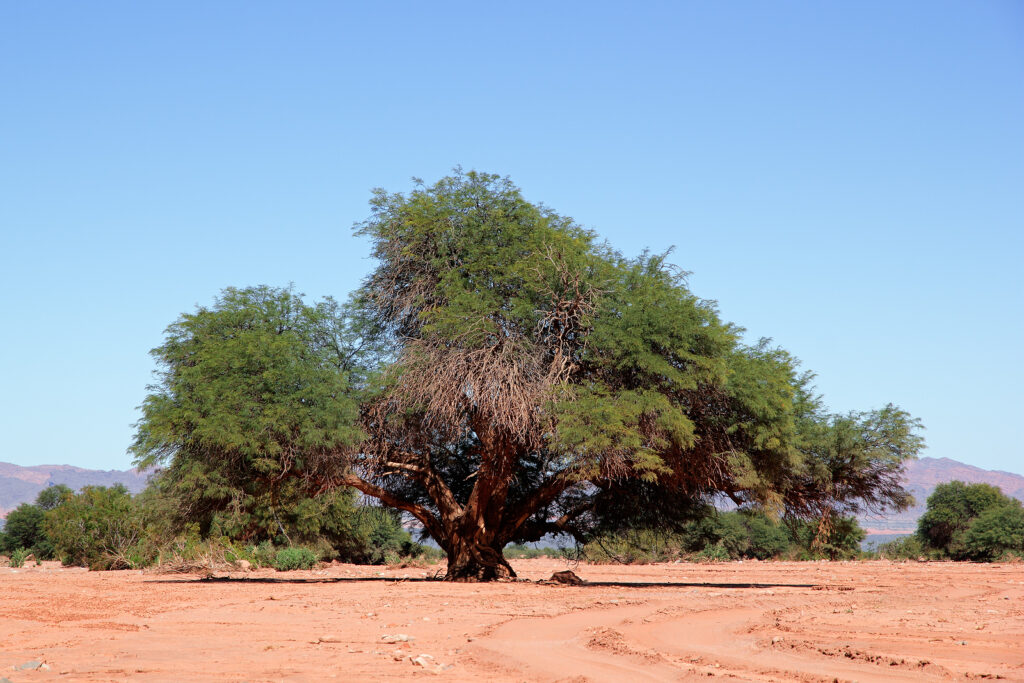
Where to Plant Prosopis
- Plant Prosopis in full sun.
- Plant Prosopis in deep, dry, sandy soil; it will tolerate alkaline and dry soils and, once established, drought.
- Prosopis roots will travel great distances—as much as 50-60 feet (15-18m) into the ground—to tap into water, though established plants are highly drought tolerant.
When to Plant Prosopis
- Set container-grown Prosopis in the garden in spring or autumn.
- Sow Prosopis seed in situ when ripe.
- Plant Prosopis deep to accommodate the tree’s long root structure.
Planting and Spacing Prosopis
- Prosopis do not transplant well because of deep, extensive root systems, so grow on in containers until planting out their final site.
- Plant Prosopis 15 feet (5m) apart.
How to Water and Feed Prosopis
- Give Prosopis regular to little water.
- In poor, rocky soil and without water, Prosopis will be shrubby; in deep soil where taproots can reach groundwater, they grow rapidly to about 30 feet tall, with a picturesque, spreading canopy.
- Feed Prosopis with an all-purpose organic fertilizer in spring.
How to Care for Prosopis
- Prosopis usually have multiple trunks but can be pruned to grow with a single trunk.
- Prune Prosopis in winter.
Prosopis Pests and Diseases
- Prosopis can develop rust, white rots, butt rot, and root rot (especially when young or under wet conditions).
Prosopis Propagation
- Remove Prosopis suckers or root semi-ripe cuttings in sand in mid- and late summer.
Prosopis Varieties to Grow
- Prosopis glandulosa, Honey mesquite, thorny shrub or tree with 2-pinnate leaves, each having 12-34 linear to oblong, mid-green leaflets, to 3 inches (8cm) long, prominently veined beneath. In spring, produces many fragrant green to cream-white flowers in racemes, to 5.5 inches (14cm) long, followed by yellow seed pods, to 8 inches (20cm) long, sometimes violet-tinged. To 28 feet (9m) tall and 15 feet (5m) wide. Southwest United States, Mexico.
- P. alba, Argentine mesquite, nearly evergreen, single-trunked with blue-green foliages and spines.
- P. chilensis, Chilean mequite, usualy deciduous with dense canopy and deep green leaves.

